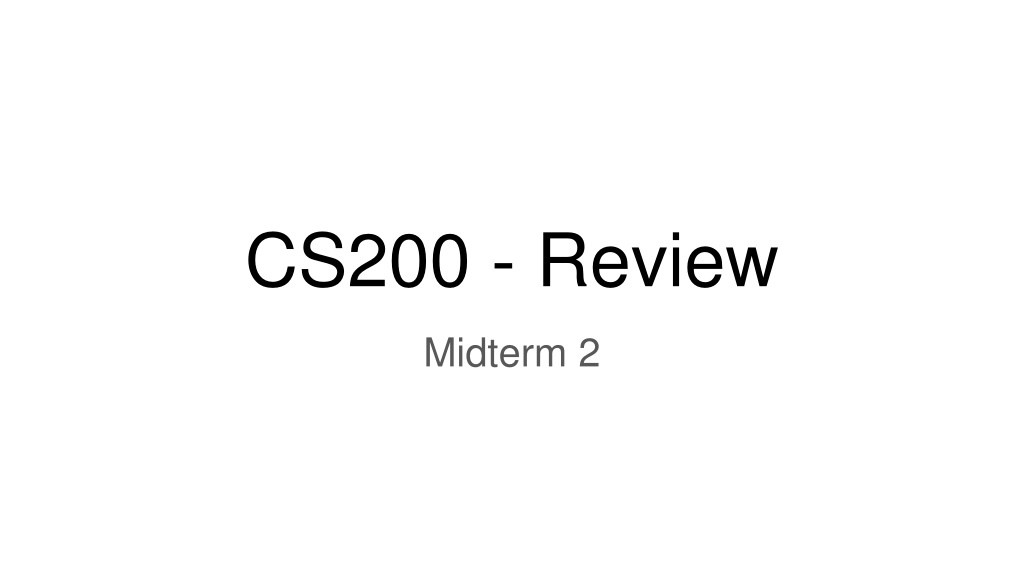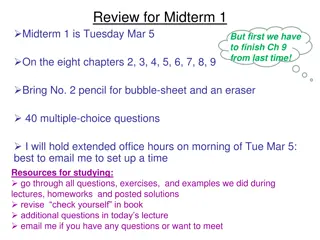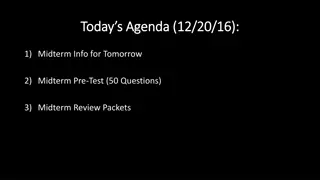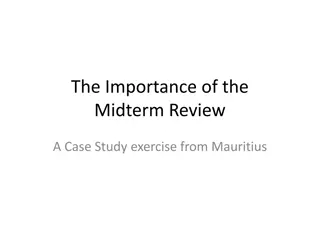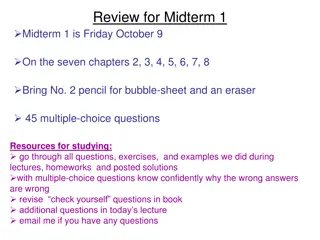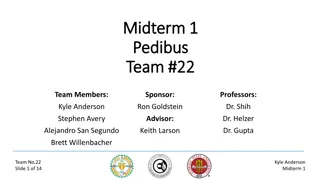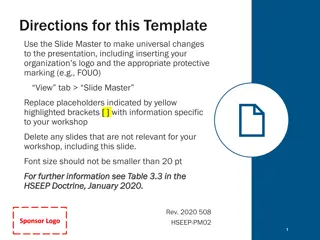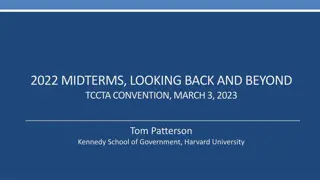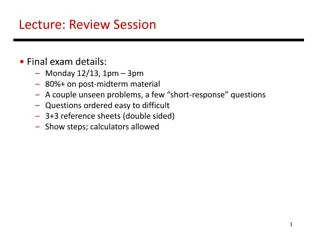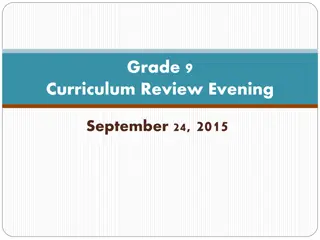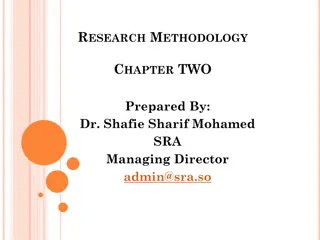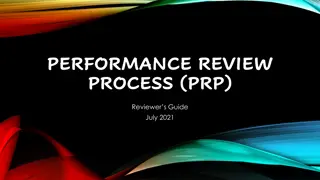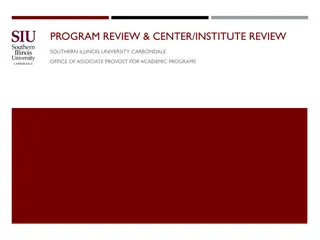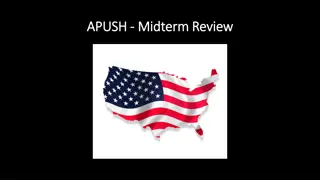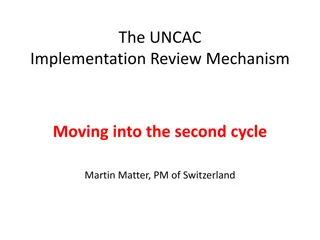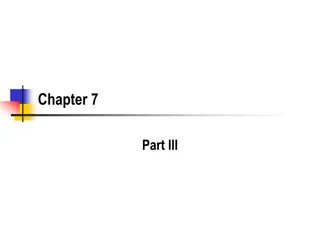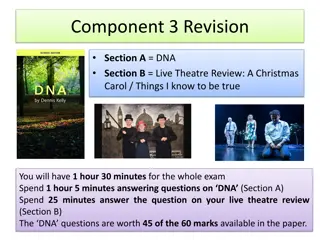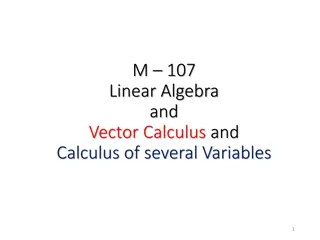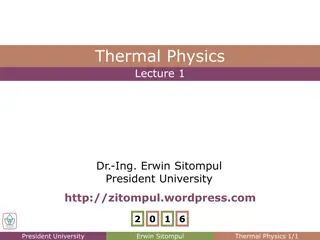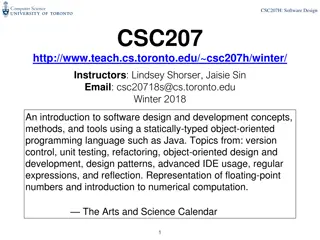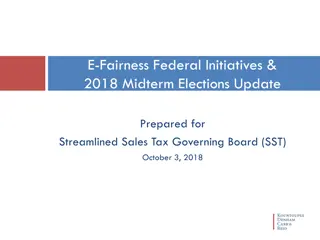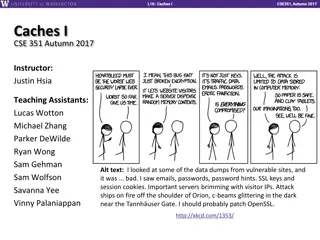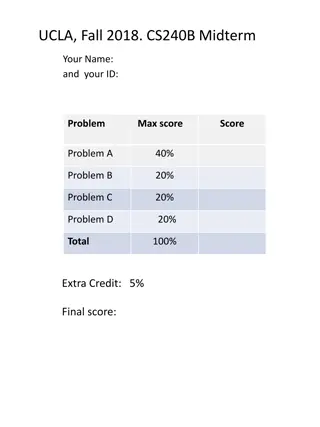Comprehensive Review and Study Tips for CS200 Midterm 2
This material covers a comprehensive review for CS200 Midterm 2, including study advice, decorators, exceptions in Python, Unix principles, queues and stacks, and more. It provides insights on important topics like defining decorators, modifying functions, handling exceptions in Python, and the importance of understanding key concepts before the exam. Additionally, it emphasizes reviewing previous homework and practice midterm solutions for better preparation.
Download Presentation

Please find below an Image/Link to download the presentation.
The content on the website is provided AS IS for your information and personal use only. It may not be sold, licensed, or shared on other websites without obtaining consent from the author. Download presentation by click this link. If you encounter any issues during the download, it is possible that the publisher has removed the file from their server.
E N D
Presentation Transcript
CS200 - Review Midterm 2
Agenda General study advice Decorators Exceptions Python virtual machine Queues and stacks UNIX - Principle 3 or Questions
General study advice Go over hw4 and hw5 if you ve completed them! Look at your implementations for the data structures in particular Carefully go over the solutions to the practice midterm if you haven t already Review these slides before the exam If you understand these, you should be able to complete the midterm comfortably.
Decorator A function that takes another function as an argument, and returns a new function that modifies the input function. For the exam: Defining decorators Using the *args keyword Modifying functions inside a decorator The __wrapped__ property of a decorator
*args represents any and all arguments that the function g can accept Decorator - example Calling the wrapped function with any arguments passed in IMPORTANT: Remember that the decorator has to return the new function that modifies the initial function s behavior, even if the initial function doesn t return anything
The __wrapped__ property A property that can be accessed on a decorated function that returns the non-decorated version of the function. incr.__wrapped__ is the default implementation of incr without the print functionality. I.e: Calling incr.__wrapped__(5) will output 6 without the print functionality.
Important exceptions Python has an extremely wide range of exceptions - make sure you familiarize yourself with the standard exceptions! Import Errors Name Errors (undefined) File Errors Index Errors Key Errors You can also raise your own exceptions! raise Exception( My exception ) Try/except pattern Code execution stops at the line that raised the error We can catch specific exceptions to allow for custom error handling
What you need to know Writing python procedures from bytecode Variable assignment Conditionals Functions Writing bytecode generated from Python
Index of instruction Variable assignment in Bytecode Instruction (opcode) Oparg Resolved argument 0 LOAD_CONST 0 (3) A = 3 2 STORE_FAST 0 (A) B = 5 4 LOAD_CONST 1 (5) 6 STORE_FAST 1 (B)
Variable assignment in Bytecode 0 LOAD_CONST 1 (6) X = 6 2 STORE_FAST 0 (X) Y = 4 4 LOAD_CONST 2 (4) 6 STORE_FAST 1 (Y)
0 LOAD_CONST 0 (6) Conditionals 2 STORE_FAST 0 (X) 4 LOAD_CONST 1 (5) X = 6 6 STORE_FAST 1 (Y) Y = 5 8 LOAD_FAST 0 (X) 10 LOAD_FAST 1 (Y) if x * y: 12 BINARY_MULTIPLY 14 POP_JUMP_IF_FALSE 18 else: X = 7 18 LOAD_CONST 2 (7) 20 LOAD_FAST 0 (X)
General approach to solving bytecode problems 1) Scan through the code and get a sense of variables and constants a) Keep a list of constants and variables on a rough piece of paper in the order they appear 1) Break down each line of code into its corresponding instructions a) Ensure you refer to your constructed list of constants and variables to get the opcodes right 1) Run the code through in your head. a) Does it load the right values at the right time? b) Are you using the correct instructions?
Queues and stacks Both are data structures that allow us to store/add/remove data in a certain order Queue First in, first out Can be implemented using stacks Stack First in, last out
How can I get better at UNIX? 1) UNIX tutorial on the Zoo! ssh into the Zoo; then in your home folder, type the following command: python3 /c/cs201/www/unixtutorial.py 2) Practice typing commands on the Zoo General tips: Be familiar with the output of each command (important in context of the transcript!)
A few scenarios We will mostly focus on principle 3 during this review session, but be sure to review principles 1 & 2 as well!
Input/output redirection touch new.txt echo hello > new.txt echo goodbye.txt > new.txt ? echo goodbye2 >> new.txt ?
